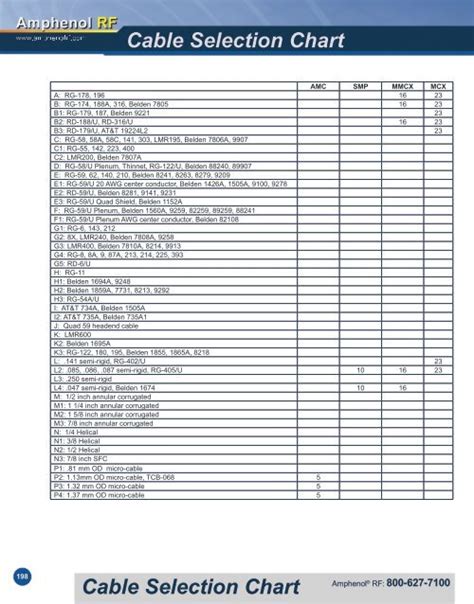Understanding Medical Cable Assemblies
Medical cable assemblies are specialized interconnect solutions designed specifically for use in medical devices and equipment. These assemblies typically consist of cables, connectors, and other components that are engineered to meet stringent requirements for biocompatibility, sterilization, durability, and electrical performance.
Key Components of Medical Cable Assemblies
- Cables
- Insulation materials (PVC, TPE, silicone)
- Shielding (foil, braid)
-
Conductor materials (copper, silver-plated copper)
-
Connectors
- Plastic housings (PVC, polycarbonate)
- Metal contacts (brass, phosphor bronze)
-
Locking mechanisms
-
Strain reliefs and overmolds
- Provides mechanical protection and strain relief
- Improves ergonomics and aesthetics
Importance of Proper Medical Cable Selection
Selecting the right medical cable assembly is crucial for several reasons:
- Patient Safety
- Ensures electrical safety and prevents shock hazards
- Minimizes electromagnetic interference (EMI)
-
Prevents cross-contamination through proper sterilization
-
Device Performance
- Maintains signal integrity and data transmission accuracy
- Ensures reliable power delivery
-
Minimizes signal attenuation and noise
-
Regulatory Compliance
- Meets regulatory standards (FDA, ISO, IEC)
- Ensures biocompatibility and non-toxicity
-
Complies with sterilization requirements
-
Durability and Reliability
- Withstands repeated use and sterilization cycles
- Resists damage from chemicals, fluids, and physical stress
- Provides long service life and reduces maintenance costs
Factors to Consider When Selecting Medical Cable Assemblies
When choosing medical cable assemblies, several key factors should be considered:
1. Application Requirements
- Intended use (diagnostic, therapeutic, monitoring)
- Environment (hospital, clinic, home care)
- Mobility requirements (stationary, portable, wearable)
2. Electrical Performance
- Voltage and current ratings
- Signal frequency and bandwidth
- EMI shielding and grounding
3. Biocompatibility
- Material selection (ISO 10993)
- Cytotoxicity, sensitization, and irritation testing
- Sterilization compatibility (EtO, gamma, autoclave)
4. Mechanical Properties
- Flexibility and bend radius
- Tensile strength and abrasion resistance
- Connector mating cycles and retention force
5. Environmental Factors
- Temperature range (operating and storage)
- Humidity and moisture resistance
- Chemical and fluid exposure
6. Regulatory Standards
- FDA 21 CFR Part 820 (Quality System Regulation)
- ISO 13485 (Medical Devices – Quality Management Systems)
- IEC 60601-1 (Medical Electrical Equipment – General Requirements for Basic Safety and Essential Performance)

Best Practices for Medical Cable Selection
To ensure optimal performance and compliance, consider the following best practices when selecting medical cable assemblies:
- Collaborate with experienced Cable Assembly Manufacturers
- Leverage their expertise in material selection and design
-
Ensure compliance with regulatory requirements
-
Conduct thorough testing and validation
- Perform electrical, mechanical, and environmental testing
-
Validate sterilization processes and biocompatibility
-
Implement rigorous quality control measures
- Establish strict manufacturing and inspection procedures
-
Maintain traceability and documentation
-
Consider total cost of ownership
- Evaluate initial costs, maintenance requirements, and service life
- Factor in the cost of non-compliance and patient safety risks
Case Studies: Successful Medical Cable Selection
Case Study 1: Cardiac Monitoring System
A manufacturer of cardiac monitoring systems needed a reliable cable assembly solution for their portable ECG device. The key requirements included:
- Lightweight and flexible cables for patient comfort
- Shielding to minimize EMI and ensure signal integrity
- Biocompatible materials for patient safety
- Compatibility with repeated sterilization cycles
The manufacturer collaborated with a medical cable assembly expert to develop a custom solution using silicone-insulated cables, braided shielding, and gold-plated connectors. The resulting cable assembly met all performance and safety requirements, ensuring accurate cardiac monitoring and patient well-being.
Case Study 2: Surgical Robotics System
A leading surgical robotics company required a high-performance cable assembly for their robotic arm control system. The critical factors included:
- High-speed data transmission for real-time control
- Flexibility and durability to withstand repeated movement
- Sterilization compatibility for use in surgical environments
- Compliance with IEC 60601-1 and ISO 13485 standards
The company partnered with a medical cable assembly manufacturer to design a custom solution using high-speed data cables, ruggedized connectors, and a sterilizable overmold. The resulting cable assembly provided reliable data transmission, withstood the rigors of the surgical environment, and met all regulatory requirements.
Frequently Asked Questions (FAQ)
-
What is the difference between medical-grade and commercial-grade cable assemblies?
Medical-grade cable assemblies are specifically designed to meet the stringent requirements of the medical industry, including biocompatibility, sterilization compatibility, and compliance with regulatory standards such as FDA and ISO. Commercial-grade cable assemblies may not meet these requirements and are not suitable for use in medical devices. -
How do I determine the appropriate cable assembly for my medical device?
To determine the appropriate cable assembly for your medical device, consider factors such as the intended use, electrical performance requirements, environmental conditions, and regulatory standards. Collaborate with experienced medical cable assembly manufacturers to leverage their expertise and ensure compliance. -
What types of sterilization methods are compatible with medical cable assemblies?
Common sterilization methods compatible with medical cable assemblies include ethylene oxide (EtO), gamma radiation, and autoclave sterilization. The specific sterilization method depends on the materials used in the cable assembly and the device’s requirements. It is essential to validate the sterilization process to ensure the cable assembly’s integrity and performance. -
How can I ensure the long-term reliability of my medical cable assemblies?
To ensure the long-term reliability of medical cable assemblies, consider factors such as material selection, design for manufacturability, and rigorous testing and validation. Implement strict quality control measures, maintain traceability and documentation, and collaborate with reputable cable assembly manufacturers with experience in the medical industry. -
What are the consequences of using non-compliant or substandard medical cable assemblies?
Using non-compliant or substandard medical cable assemblies can have severe consequences, including compromised patient safety, device malfunction, and regulatory non-compliance. Substandard cable assemblies may lead to electrical hazards, signal integrity issues, and premature failure, putting patients at risk and exposing manufacturers to legal and financial liabilities.
Conclusion
Selecting the appropriate medical cable assemblies is a critical aspect of designing and manufacturing medical devices. Careful consideration must be given to factors such as application requirements, electrical performance, biocompatibility, mechanical properties, environmental factors, and regulatory standards. By collaborating with experienced medical cable assembly manufacturers, conducting thorough testing and validation, implementing rigorous quality control measures, and considering the total cost of ownership, medical device manufacturers can ensure optimal performance, patient safety, and long-term reliability.
Investing in high-quality, compliant medical cable assemblies is essential for the success of any medical device. By prioritizing cable selection and partnering with trusted suppliers, manufacturers can minimize risks, enhance device performance, and ultimately improve patient outcomes.
| Factor | Considerations |
|---|---|
| Application Requirements | Intended use, environment, mobility |
| Electrical Performance | Voltage and current ratings, signal frequency, EMI shielding |
| Biocompatibility | Material selection, cytotoxicity, sterilization compatibility |
| Mechanical Properties | Flexibility, tensile strength, connector mating cycles |
| Environmental Factors | Temperature range, humidity, chemical exposure |
| Regulatory Standards | FDA 21 CFR Part 820, ISO 13485, IEC 60601-1 |
Table 1: Key factors to consider when selecting medical cable assemblies.
By carefully evaluating these factors and following best practices for medical cable selection, manufacturers can ensure that their medical devices are equipped with reliable, high-performance cable assemblies that meet the demanding requirements of the healthcare industry.






Leave a Reply